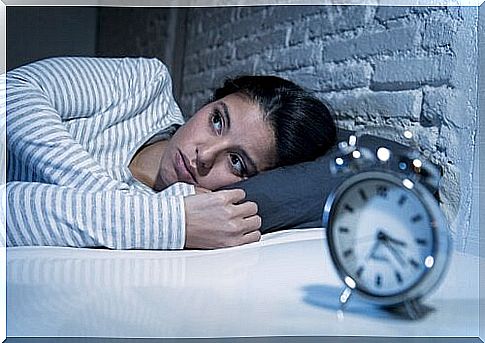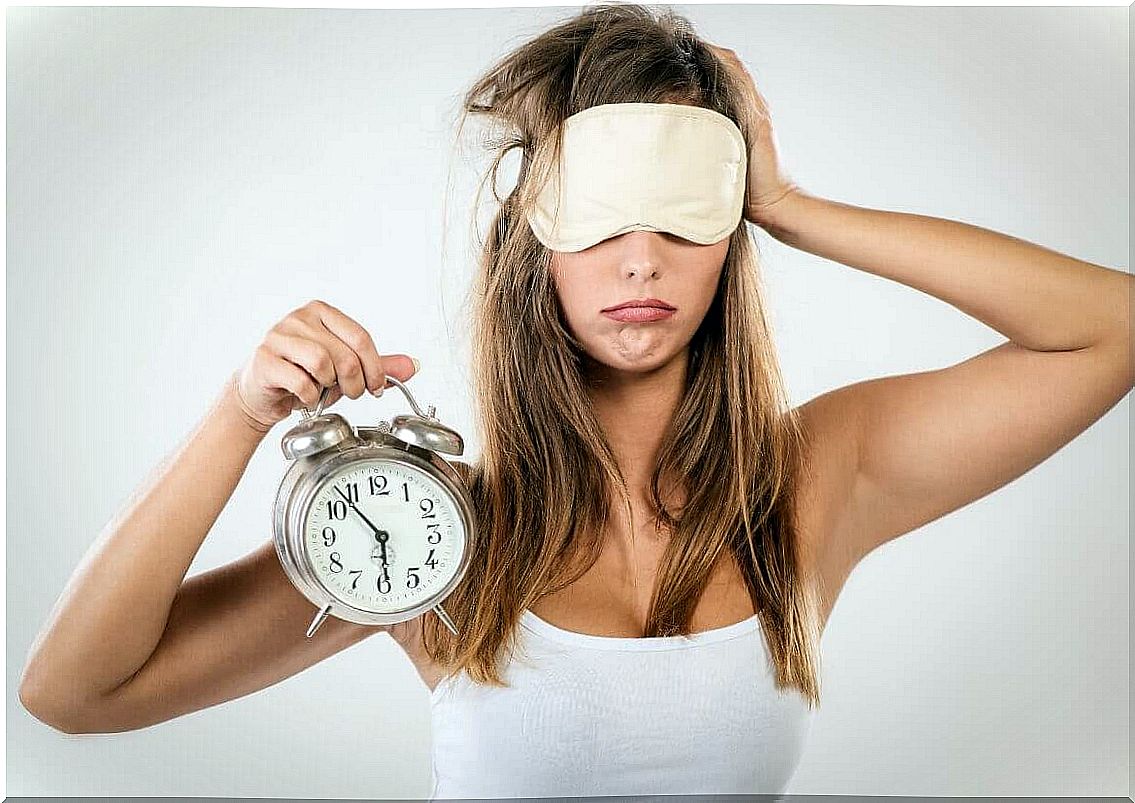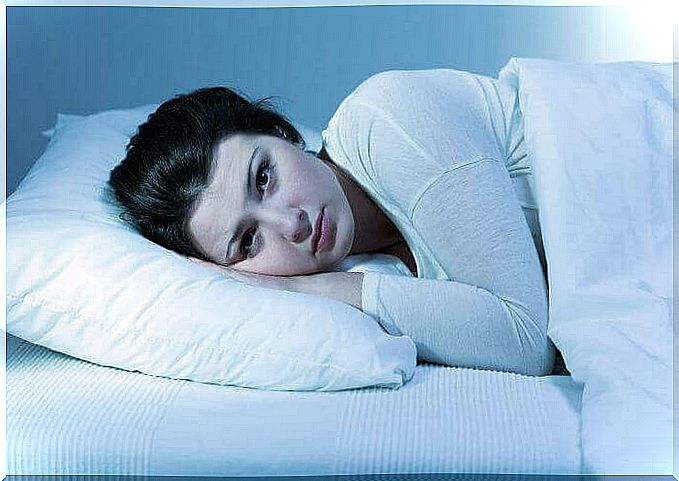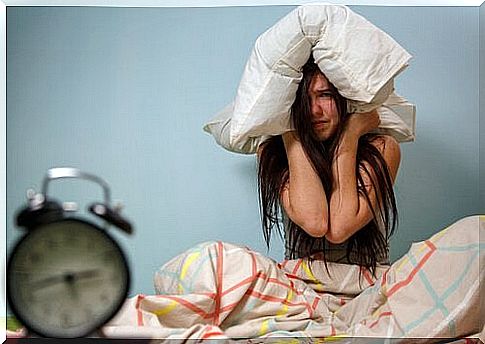Circadian Rhythm Disorders: Do You Suffer From It?

Don’t you know what circadian sleep-wake rhythm disorders are? Don’t worry, we talk about it in this article. Certainly you have happened to suffer from insomnia, a very common ailment.
There are nights when it is hard to sleep. Once in bed, we keep changing positions, in a futile attempt to fall asleep. Other times we open our eyes before we wake up and we can’t sleep anymore. These are two typical cases of insomnia.
Insomnia has more than one cause. It is often the result of poor sleep habits (watching TV in bed, consuming stimulants before going to sleep, for example). In other cases, stress and overexcitation of the nervous system are responsible.
Circadian rhythm disturbances, however, are characteristic of what is called the “biological clock”; it regulates the (approximately) 24-hour cycle of biological processes in animals and plants.
What are circadian rhythms?
Circadian rhythms are intrinsic biological rhythms and of a periodic nature that occur at 24-hour intervals. They are based on the daily rotation of the earth around the sun (day-night cycle). The term comes from the Latin word “cĭrca” (around) and “dīes” (day). The full meaning, therefore, is “around the day”. In mammals, the most important circadian rhythm is the sleep-wake cycle.
Circadian rhythms are therefore not found only in humans. All living things, including plants, insects and bacteria are subject to it. The processes that affect natural sleep work with circadian rhythms. Humans are designed to have a natural sleep cycle consistent with the day-night cycle. Thus, we can sleep during the night and stay awake during the day.
Circadian rhythms do not only determine the sleep and feeding patterns of animals. They play an equally important role in brain, hormonal and cell regeneration activities.

Our biological clock
Several researchers have come to the conclusion that there must be a structure within our body that regulates circadian rhythms.
This structure has been identified in the so-called suprachiasmatic nucleus. It is located in the brain, in the region of the hypothalamus, just behind the eyes. This area is responsible for our sleep at night and for our daytime wakefulness.
Circadian rhythm disturbances
If we fall asleep or wake up an hour earlier than usual, this is generally not a problem. It can become when we can’t wake up or can’t keep our eyes open during the working day.
In these cases, the sleep rhythm becomes a problem and the diagnosis could be a circadian rhythm disorder.
Diagnostic criteria
To be able to diagnose a circadian rhythm disorder, certain requirements or set of symptoms must be met :
A. Continuous or recurrent pattern of sleep disruption. It is a pattern due to an alteration of the circadian system or a faulty alignment between the endogenous circadian rhythm and the necessary sleep-wake synchronization. It is a necessity that depends on the environment in which the individual lives or on his social and work habits.
B. Interrupted sleep causes excessive sleepiness, insomnia, or both.
C. Impaired sleep causes clinically significant distress or deterioration in social, occupational, or other important areas in which the person plays an active role.

What circadian rhythm disorders are there?
According to the Diagnostic and Statistical Manual of Mental Disorders (DSM 5) there are several circadian rhythm disorders related to the sleep-wake rhythm.
- Delayed sleep phases.
- Early sleep stages.
- Irregular sleep-wake rhythm.
- Sleep-wake rhythm not regulated over 24 hours.
- Disorder associated with work shifts.
- Type not specified.
“Delayed sleep stages” type
It is essentially characterized by a delay with respect to the sleep rhythm (usually more than two hours) or with respect to the time set for falling asleep or waking up.
By being able to decide their own sleep-wake schedule, people with delayed sleep phases enjoy normal sleep quality and duration for their age. Among the main symptoms we can mention insomnia before falling asleep, difficulty waking up in the morning and heavy sleepiness in the early hours of the day.
Symptoms typically appear in adolescence or early adulthood. They can persist for a long time, a few months or even years before reaching a diagnosis. The intensity may decrease with age, but relapses are common. A change in school or work hours that results in an early wake-up call causes the disorder to worsen.

Type “early sleep stages”
It is characterized by a sleep-wake rhythm a few hours earlier (usually more than two hours) compared to the desired or conventional time of falling asleep or awakening.
This disorder leads to early awakenings and daytime sleepiness. Also in this case, being able to decide their own schedules, subjects with an early sleep phase enjoy a sleep of quality and duration in line with their age. Those who suffer from “early sleep phases” often have a family history of this type.
This sleep disorder usually appears in late adulthood, is persistent, and lasts for more than three months.
Irregular sleep-wake rhythm
The irregular sleep-wake rhythm consists mainly of episodes of sleeplessness at night (during the normal sleep cycle) and excessive sleepiness (the need to take naps) during the day. It is characterized by the absence of a recognizable circadian sleep-wake rhythm. Sleep has no main rhythm and is fragmented into at least three stages over the course of 24 hours.
Sleep-wake rhythm not regulated over 24 hours
The diagnosis of this disorder is mainly based on episodes of insomnia or excessive sleepiness caused by an abnormal synchronization between the light-dark cycle over the course of 24 hours and the endogenous circadian rhythm. People with it experience periods of insomnia, intense sleepiness, or both, alternating with short, symptom-free periods.
This type is more common in people who are blind or with impaired vision, due to the lower perception of light. In sighted people there is also an increase in the duration of sleep.

Disorder associated with work shifts
It generally affects workers subject to shifts or working hours other than the typical 8:00 – 18:00 hours (especially night work).
There are persistent symptoms of severe sleepiness at work and altered sleep patterns at home that disappear when the subject resumes typical working hours. People who frequently travel to areas with different time zones can also have a similar effect.
If you have one of these circadian rhythm disturbances, we recommend that you re-establish more “regular” sleep habits, if possible. If it seems too complicated or you feel you need help, a psychologist can certainly help you solve the problem.
Bibliographical references:
American Psychiatry Association. Diagnostic and Statistical Manual of Mental Disorders (DSM 5), 5th Ed. Raffaello Cortina Editore.









